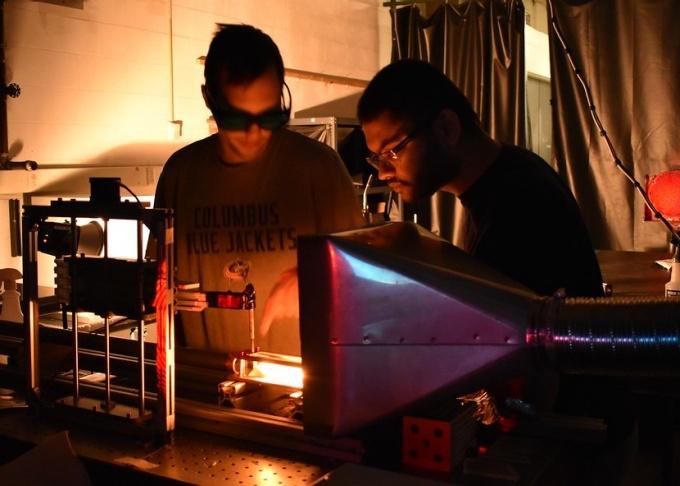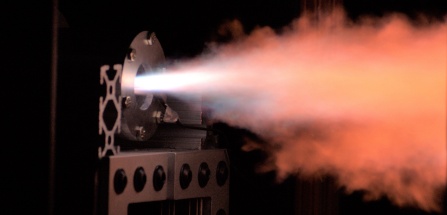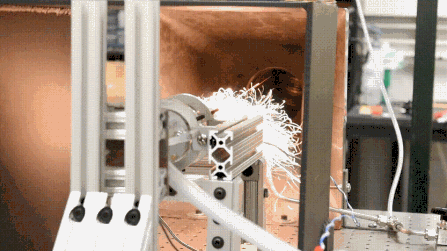Research
Our focus is to leverage advances in both exascale computing and machine learning to better understand the turbulent mixing and fuel entrainment in the combustion environment that is critical to the operation of hybrid rocket motors.
The Problem
Low-cost access to space has never been in higher demand, and launch costs are driven principally by the propulsion system. Existing liquid propulsion systems are complex and seem to have reached the limit for fuel energy density. A breakthrough on propellant that significantly increases the energy density, or specific impulse, of the propellant, would greatly reduce launch costs, accelerating access to space and its industrial development.

Practical operation of high-regression rate, hybrid rocket motors is of great interest, because they can provide the sought-after blend of the high energy density of solid bi-propellant systems with the specific impulse and flexibility of liquid-fueled, air-breathing engines. These fuels burn differently from traditional polymeric fuels in that they form a thin liquefaction layer at the solid fuel surface where instability leads to atomization and enhanced burning rates. Practical hybrid motors, however, have not yet been realized due to limited understanding and control of precise combustion burning modes and thermo-mechanical coupling at the interface.
Technical Challenge
A hybrid rocket motor works by combining a segregated solid fuel with a gaseous oxidizer, e.g., air or liquid oxygen (LOX). The challenge of operating a hybrid rocket motor is controlling the turbulent flow physics at the fuel-oxidizer interface which is dominated by conjugate heat and mass transfer and combustion processes. The focus of the newly formed CHREST is to leverage advances in both exascale computing and machine learning to better understand the turbulent, multiphase mixing, and fuel entrainment in the combustion environment that is so critical to the operation of these systems.
CHREST will bring together faculty and students from the University at Buffalo (UB) and Tufts University who specialize in engineering, computer science, and mathematics, to combine new mathematical models with first-principles’ simulation of hybrid rocket motors to enable a next-generation of low-cost space flight. The Center will utilize extremely powerful computers to simulate previously developed hybrid rockets as well as future theoretical rockets. The team also will develop machine learning algorithms that offer insight into how to better design hybrid rockets. Educational Component CHREST is establishing a vibrant program to educate UB students about hybrid technology.

The Center will support UB’s Students for the Exploration and Development of Space (SEDS), an undergraduate student club that designs, builds, tests and launches rockets. The club competes in the annual Spaceport America Cup, the world’s largest intercollegiate rocket engineering conference and competition. The program aims to recruit students from groups underrepresented in science, technology, engineering, and math fields.


Educational Component
CHREST is establishing a vibrant program to educate UB students about hybrid technology. The Center will support UB’s Students for the Exploration and Development of Space (SEDS), an undergraduate student club that designs, builds, tests and launches rockets. The club competes in the annual Spaceport America Cup, the world’s largest intercollegiate rocket engineering conference and competition. The program aims to recruit students from groups underrepresented in science, technology, engineering, and math fields.
This includes working with established programs such as the Louis Stokes Alliance for Minority Participation, more commonly known as LSAMP, and Buffalo-area Engineering Awareness for Minorities, also known as BEAM, to provide students with hands-on research experiences in a developing field
Outcomes
Potential future uses of hybrid rockets include launching satellites, especially nanosatellites, into space from Earth. Such systems also could be very useful in situations where high thrust is required to lift heavy payloads loads into space from planetary surfaces, such as NASA’s planned Mars Ascent mission.